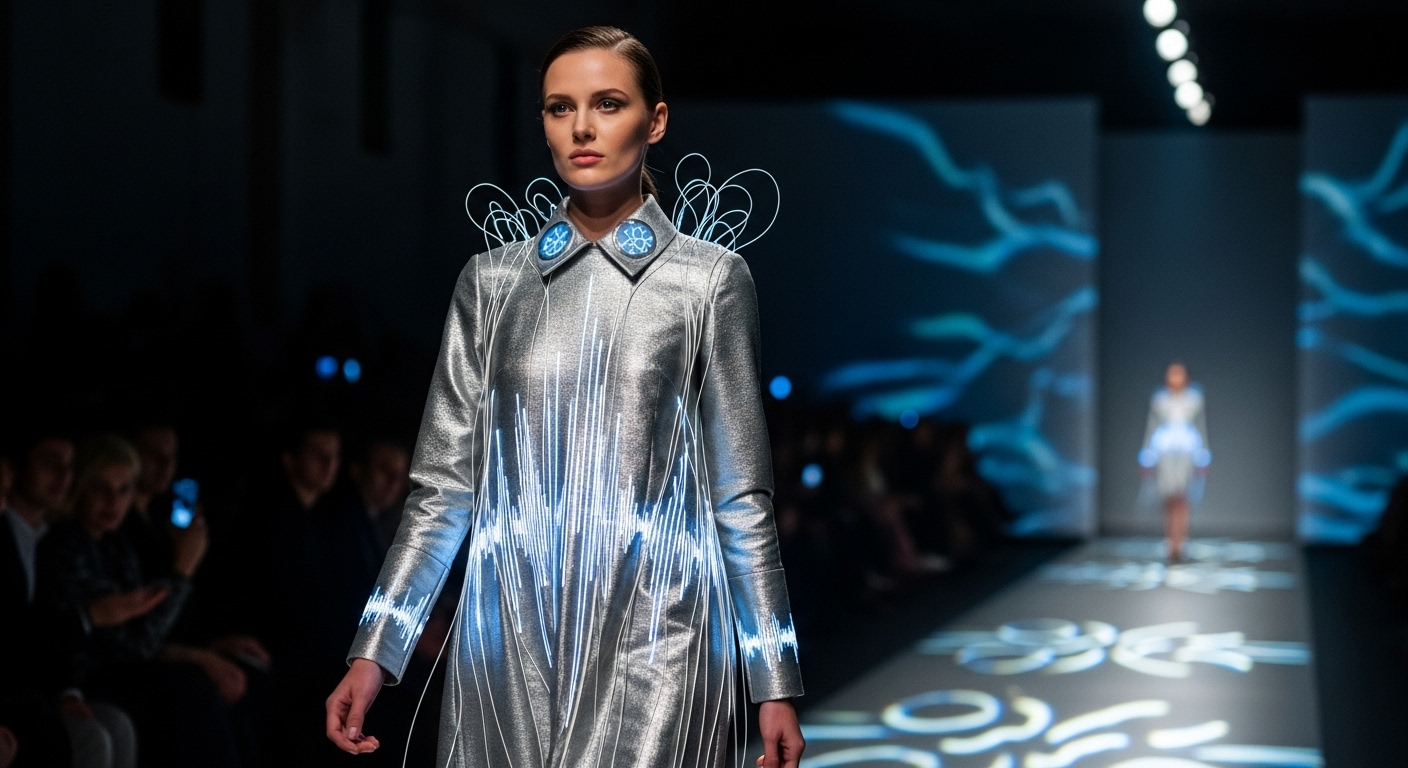Holographic Haute Couture: Fashion's Digital Frontier
In the ever-evolving landscape of high fashion, a groundbreaking trend is taking center stage: holographic haute couture. This cutting-edge fusion of technology and artistry is revolutionizing runway shows, redefining the concept of wearable art, and pushing the boundaries of what's possible in fashion design. As holographic garments shimmer and shift before awestruck audiences, the industry finds itself at the precipice of a new era, where the lines between physical and digital fashion blur into a dazzling spectacle of innovation.

As holographic technology advanced, so did its applications in fashion. The development of more sophisticated projection systems and flexible, hologram-embedded fabrics opened up new possibilities for designers. By the mid-2010s, holographic elements were no longer novelties but integral components of avant-garde collections, appearing on runways from Paris to Tokyo.
Technological Innovations Driving the Trend
The rise of holographic haute couture has been fueled by rapid advancements in holographic technology. Traditional holograms, which required specific viewing angles and lighting conditions, have given way to volumetric displays and augmented reality integrations. These new technologies allow for 360-degree viewing and real-time manipulation of holographic elements, creating a more immersive and interactive fashion experience.
One of the most significant breakthroughs has been the development of holographic fabric. This material, embedded with microscopic prisms or nanoparticles, can project three-dimensional images or change colors and patterns in response to movement or external stimuli. Designers are now able to create garments that transform before the viewer’s eyes, shifting from one design to another in a seamless display of technological artistry.
Redefining the Runway Experience
Holographic haute couture has transformed the traditional runway show into a multisensory spectacle. Fashion houses are now employing teams of technologists alongside their designers to create immersive environments where models wearing holographic garments interact with digital projections and augmented reality elements. These shows blur the line between fashion and performance art, captivating audiences and generating buzz far beyond the confines of the fashion world.
In 2023, a major European fashion house made headlines with a show that featured models seemingly walking on water, their holographic gowns rippling and changing with each step. The event, which combined physical garments with holographic overlays, was hailed as a watershed moment in fashion presentation, setting a new standard for creativity and technological integration in the industry.
The Intersection of Fashion and Technology
The rise of holographic haute couture represents a broader trend of convergence between the fashion and technology sectors. As fashion houses invest more heavily in research and development, they are forging partnerships with tech companies and startups specializing in holographic and augmented reality technologies. These collaborations are not only pushing the boundaries of what’s possible in fashion design but are also driving innovations that have applications far beyond the runway.
The technology behind holographic fashion is finding its way into other areas of the industry, from retail experiences to digital fashion platforms. Virtual fitting rooms equipped with holographic mirrors allow customers to try on garments without physically changing clothes, while digital fashion shows enable designers to showcase their collections to a global audience without the need for physical attendance.
Sustainability and the Digital Fashion Revolution
As the fashion industry grapples with its environmental impact, holographic haute couture offers an intriguing solution. Digital-only fashion collections, which exist solely in virtual spaces, are gaining traction as a sustainable alternative to physical garments. These digital designs can be worn in virtual reality environments, social media platforms, and even video calls, allowing fashion enthusiasts to express their style without the need for material production.
Moreover, holographic technology is being used to create more sustainable physical fashion. By incorporating holographic elements into garments, designers can create pieces that change appearance without the need for multiple outfits, potentially reducing overconsumption and waste in the fashion industry.
The Future of Holographic Fashion
As holographic technology continues to evolve, its potential applications in fashion seem limitless. Industry experts predict that we will soon see holographic accessories that can change to match any outfit, garments that adapt to the wearer’s environment or mood, and fashion shows that can be experienced in fully immersive virtual reality.
The integration of artificial intelligence with holographic fashion is another exciting frontier. AI-powered holographic garments could learn and adapt to the wearer’s preferences, automatically adjusting their appearance based on factors like the time of day, location, or even the wearer’s vital signs.
Challenges and Ethical Considerations
While the future of holographic haute couture looks bright, it is not without its challenges. The high cost of developing and implementing holographic technology remains a significant barrier to widespread adoption. Additionally, concerns about privacy and data security have been raised as garments become increasingly connected and intelligent.
There are also ethical considerations to address, such as the potential for holographic fashion to exacerbate body image issues or create unrealistic beauty standards. As the technology becomes more sophisticated, the fashion industry will need to grapple with questions of authenticity and the value of physical versus digital fashion.
A New Chapter in Fashion History
Holographic haute couture represents more than just a passing trend; it signals a fundamental shift in how we conceive of and interact with fashion. As technology continues to push the boundaries of what’s possible, we can expect to see even more stunning innovations emerge from the intersection of fashion and holography. The fusion of creativity, technology, and sustainability embodied by holographic fashion may well be writing the next chapter in the long and storied history of haute couture.





